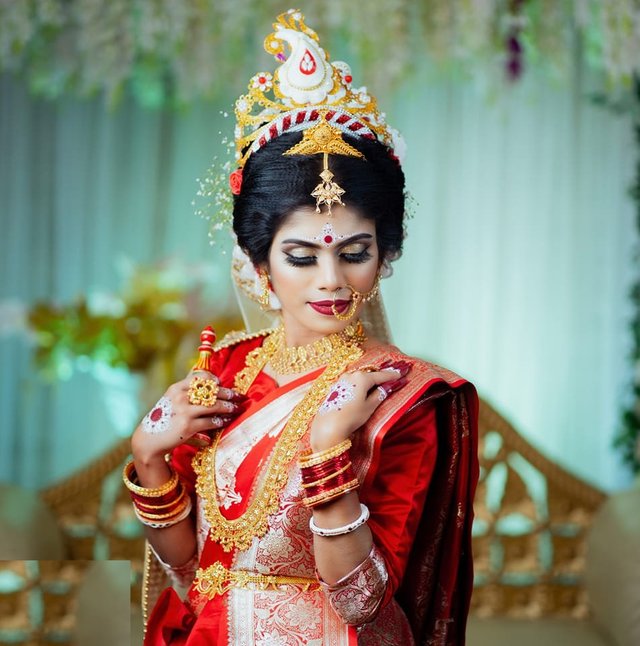Bengali Hindu marriage rituals .
Bengali Hindu marriage rituals typically involve a series of pre-wedding, wedding, and post-wedding ceremonies. Here are some of the most common rituals:

Patri Patra: This is the formal proposal made by the groom's family to the bride's family, seeking her hand in marriage.
Ashirbad: This ceremony is where the bride's father blesses the groom and gives him a token of goodwill.
Aai Budo Bhaat: This is a pre-wedding ritual where the bride and groom have their last meal as single people.
Holud Kota: This is a ceremony where turmeric paste is applied to the bride and groom's bodies to purify and beautify them.
Gaye Holud: This is a ceremony where the bride and groom's respective families apply turmeric paste on them, and also perform various other rituals, including singing and dancing.
Mala Badal: The bride and groom exchange flower garlands.
Saat Paak: The bride is seated on a wooden stool, and the groom holds her hand and takes seven circles around her.
Sindoor Daan: The groom applies sindoor (vermilion powder) on the bride's forehead, symbolizing her status as a married woman.
Basar Ghar: This is a post-wedding ritual where the bride's family invites the newlywed couple to their home for a meal.
Bou Bhaat: This is a post-wedding ritual where the bride eats her first meal at her in-laws' house.
Phool Sojja: This is the first night of the bride and groom together as husband and wife. Their room and the bed are decorated with flowers. The bride also gets ready with a new saree and wears floral ornaments.
These are just a few of the many rituals that are part of a Bengali Hindu wedding. The exact rituals and their order may vary depending on the region and community.